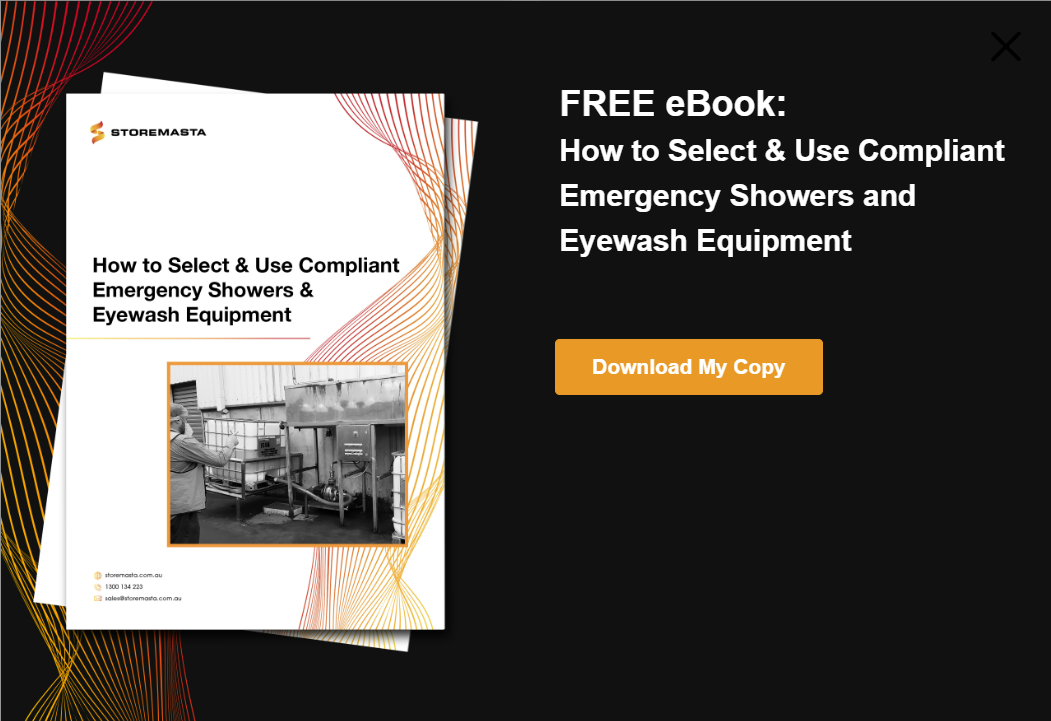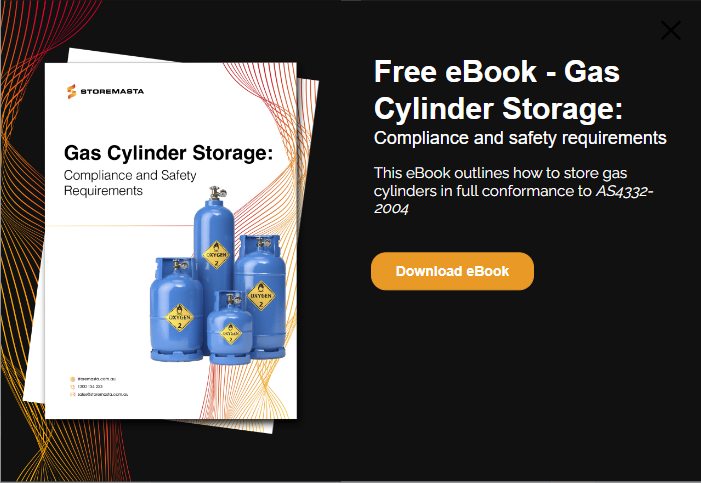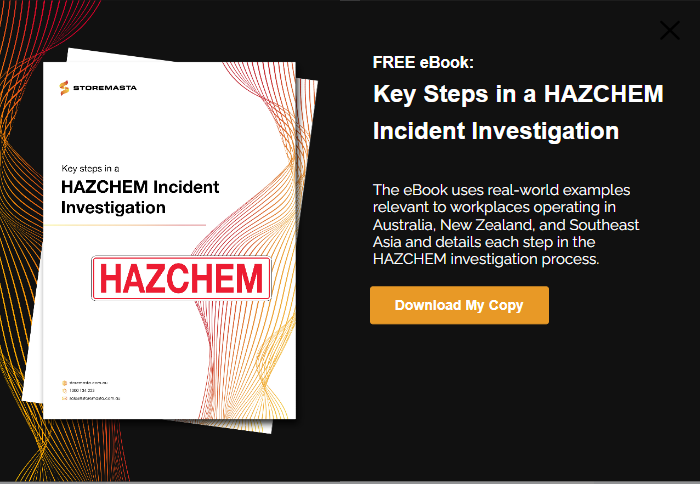STOREMASTA have been an Australian industry leader and chemical storage authority for more than 30 years now, and we’re always eager to share our knowledge and expertise to help our clients reach 100% chemical compliance. In today’s blog we’re sharing our 6 most requested eBooks (all completely free) which you can download here on the blog. Use any of these eBooks when carrying out your next risk assessment, staff training session, or pre-shift toolbox talk.
1. Essential Considerations When Storing Flammable Liquids Indoors
Our latest eBook Essential Considerations When Storing Flammable Liquids Indoors will help you select and install an indoor safety cabinet that meets the requirements of Australian Safety Standards. It contains critical information for:
- Understanding what causes flammable liquids to burn, explode, or flashback.
- Assessing your flammable liquids compliance obligations (using the STOREMASTA 4-step risk management methodology).
- Choosing the best indoor cabinet for your needs (regular or heavy duty).
- Ensuring your cabinet is installed in the correct location and does not breach aggregate quantities or chemical segregation requirements.
- Loading and maintaining your cabinet — in accordance with Australian Standard AS1940:2017 –- The storage and handling of flammable and combustible liquids.
Even if you only carry small quantities of Class 3 Flammable Liquids, we encourage you to read this eBook. Download for free today.
2. The risk assessment process for hazardous chemicals
Hazardous chemicals in the workplace create a series of complex risks and hazards. Our eBook The risk assessment process for hazardous chemicals will help you fulfil your duty under Australian WHS Regulations — to provide a workplace that is free of risk, where all hazards have been properly identified, assessed and controlled.
More specifically the eBook explains:
- How a risk assessment fits into a compliant risk management plan.
- How to determine if you are legally required to carry out a chemical risk assessment.
- Different types of chemical hazards and how they could cause harm at your workplace.
- The 7 essential steps in the risk assessment process.
- Proven methods for prioritising each chemical hazard for further action.
Use our eBook as a guide when putting together your risk assessment team or empowering your safety committee. Download it for free now.
3. How to select and use compliant emergency showers and eyewash equipment
Creating an emergency decontamination station is essential if your workers could be splashed by hazardous chemicals or at risk of eye exposure injuries. Our eBook How to select and use compliant emergency showers and eyewash equipment details everything you need to know to:
- Choose the most suitable emergency showers and eyewash units — based on the unique hazards at your workplace.
- Safely operate an eyewash unit to treat different types of eye injuries.
- Activate and use an emergency shower after a chemical exposure injury or burn.
- Install your emergency decontamination station in compliance with Australian Safety Standards.
- Correctly test and maintain safety showers and eyewash units.
Download and read this important eBook today — it could save someone’s life. And it’s completely free.
4. Gas Cylinder Storage: Compliance and Safety Requirements
If you carry compressed gases in cylinders, our eBook Gas Cylinder Storage: Compliance and Safety Requirements is essential reading. We use real world examples to demonstrate the critical hazards and storage issues surrounding Class 2 Dangerous Goods (gases), as well as practical advice to help you:
- Choose the best location for your gas cylinder store.
- Install a cylinder store that meets the requirements of Australian Standard AS4332:2004 — The storage and handling of gases in cylinders.
- Correctly separate and segregate the different classes of compressed gases.
- Apply industry best practices during cylinder handling and storage.
- Use the STOREMASTA 4-step risk management methodology to assess and review the suitability of your gas cylinder stores.
Every workplace is different, so take the time to read our eBook before purchasing or constructing a gas cylinder store. Download Gas Cylinder Storage: Compliance and Safety Requirements for free now.
5. Key steps in a HAZCHEM incident investigation
Dangerous incidents involving hazardous chemicals (even if no one was injured) must be promptly reported to the WHS Regulator in your state or territory. Read this eBook and you will fully understand why it’s also important to investigate the cause of the incident and take steps to prevent it from happening again.
Our eBook Key steps in a HAZCHEM incident investigation details the investigation process — and will teach you how to:
- Secure the scene of an incident and assist WHS inspectors and investigators.
- Obtain incident reports and gather physical evidence from the scene.
- Interview and question witnesses
- Review critical documents to help you understand what happened.
- Collate and evaluate all the evidence and data.
- Establish the root causes of the incident and take corrective actions to ensure the incident doesn’t happen again.
Download this eBook and share it with your incident investigation team today.
6. Aerosol safety and storage
You’ll find at least one aerosol can at just about every workplace in Australia. And whether it’s a can of paint, lubricant, whipped cream, fly spray, cooking oil, adhesives, or degreasers — each must be treated as a Class 2.1 Flammable Gas.
This detailed eBook answers all your questions about aerosol safety and contains all the tools you need to use and store them safely — and in compliance with Australian Safety Standards. More specifically we unpack:
- Why a can of whipped cream is considered Class 2.1 Dangerous Goods.
- Actual workplace incidents that involved aerosols and workers were left with severe injuries.
- Recommendations for safe handling procedures and work practices.
- Essential storage requirements under Australian Safety Standards.
Download Aerosol safety and storage for free today and get your workplace 100% chemical storage compliant.
Joining the team as a Dangerous Goods Storage Consultant, Melissa Hampton became Storemasta's Marketing Manager in late 2021. With extensive knowledge and experience in chemical compliance, Melissa is responsible for leading the Marketing team and helping shape their marketing strategy. In her spare time, you can find Melissa hiking, swimming and enjoying the great outdoors in beautiful north-west Tasmania.





